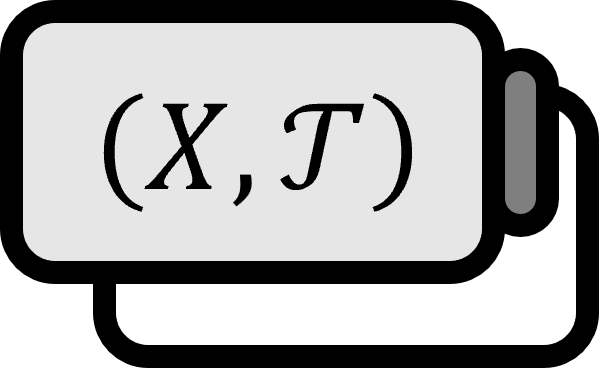Subbasis in Topology
Definition 1
Let’s say there is a topological space $\left( X , \mathscr{T} \right)$ and consider $\mathscr{S} \subset \mathscr{T}$.
When $\displaystyle \mathscr{B} = \left\{ \left. B = \bigcap_{ i = 1}^{n} S_{i} \ \right| \ S_{i} \in \mathscr{S} \right\}$ becomes the basis for $\mathscr{T}$, then $\mathscr{S}$ is called a Subbasis for $\mathscr{T}$.
Explanation
The reason why accepting the concept of subbasis can be difficult is because the term ‘sub’ in mathematics usually implies a subset while maintaining the original properties. For example, a subgroup means a subset that satisfies the conditions of a group, and a subspace means a subset that satisfies the conditions of the space. In this sense, the term subbasis can be more confusing than the concept itself.
By definition, if $\mathscr{S}$ has become a subbasis then being a subset, that is $\mathscr{S} \subset \mathscr{B}$, of the basis $\mathscr{B}$ is trivial. However, since $\mathscr{S}$ must constitute $\mathscr{B}$ as a set of all finite intersections to become a basis, it can also be described as still immature as a basis.
Rather, considering mathematics thus far, it seems more natural to say that subbasis is the basis of a basis. The problem lies in the fact that despite understanding the term ‘sub’, the definition of subbasis itself remains complex and bizarre. It is easier to accept this for the study of the product of topological spaces later on. After studying it to some extent, one would also understand why it is specifically finite intersections that are considered.
Now let’s grasp the concept a bit more through an example.
Example
Show that $\mathscr{S} = \left\{ (- \infty , b ), ( a , \infty ) \ | \ a,b \in \mathbb{R} \right\}$ is a subbasis for the metric space $\mathbb{R}$.
Solution
Since all open intervals $(a,b)$ can be formed as the intersection of two open intervals $( - \infty , b )$ and $( a , \infty )$, $\mathscr{S}$ becomes a subbasis.
■
Munkres. (2000). Topology(2nd Edition): p82. ↩︎
